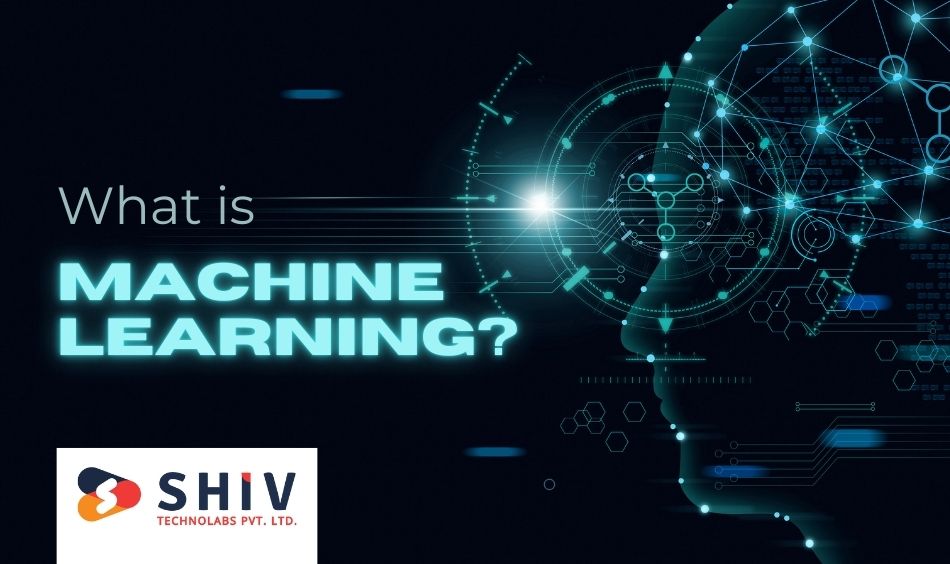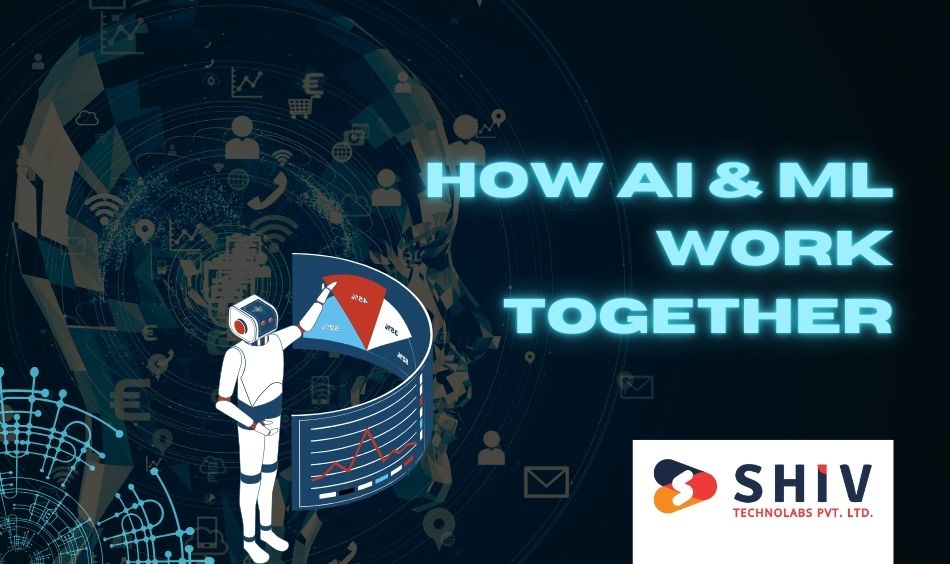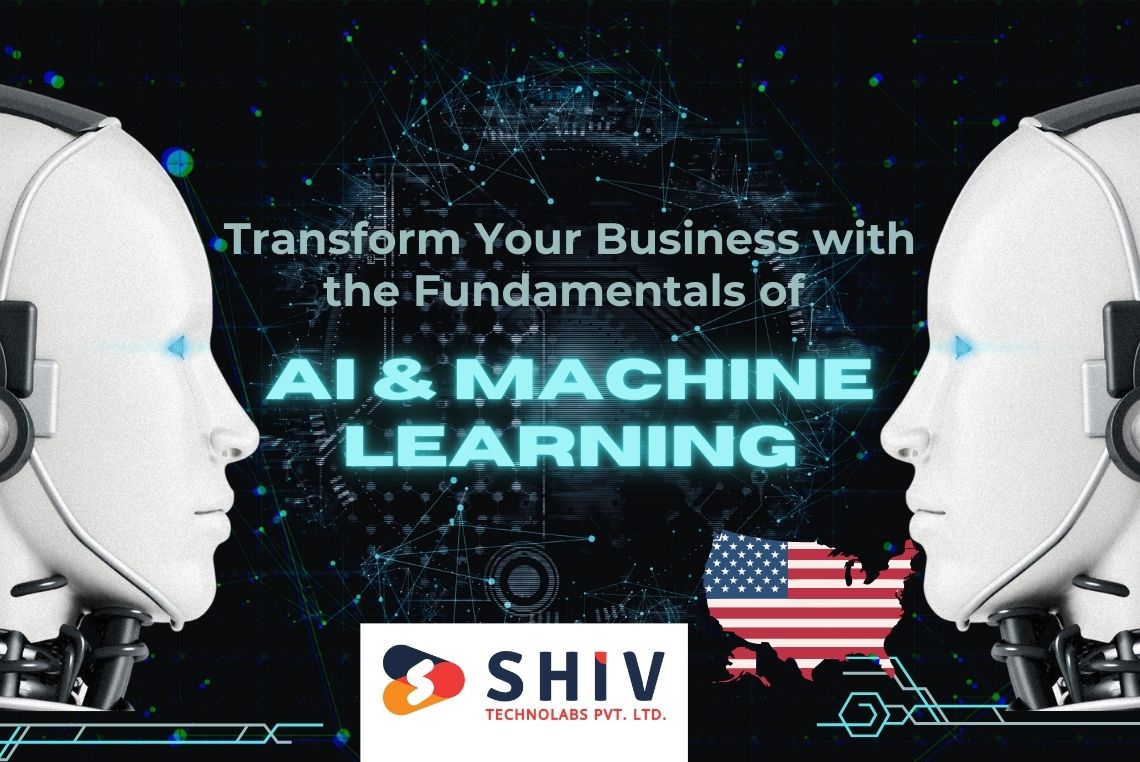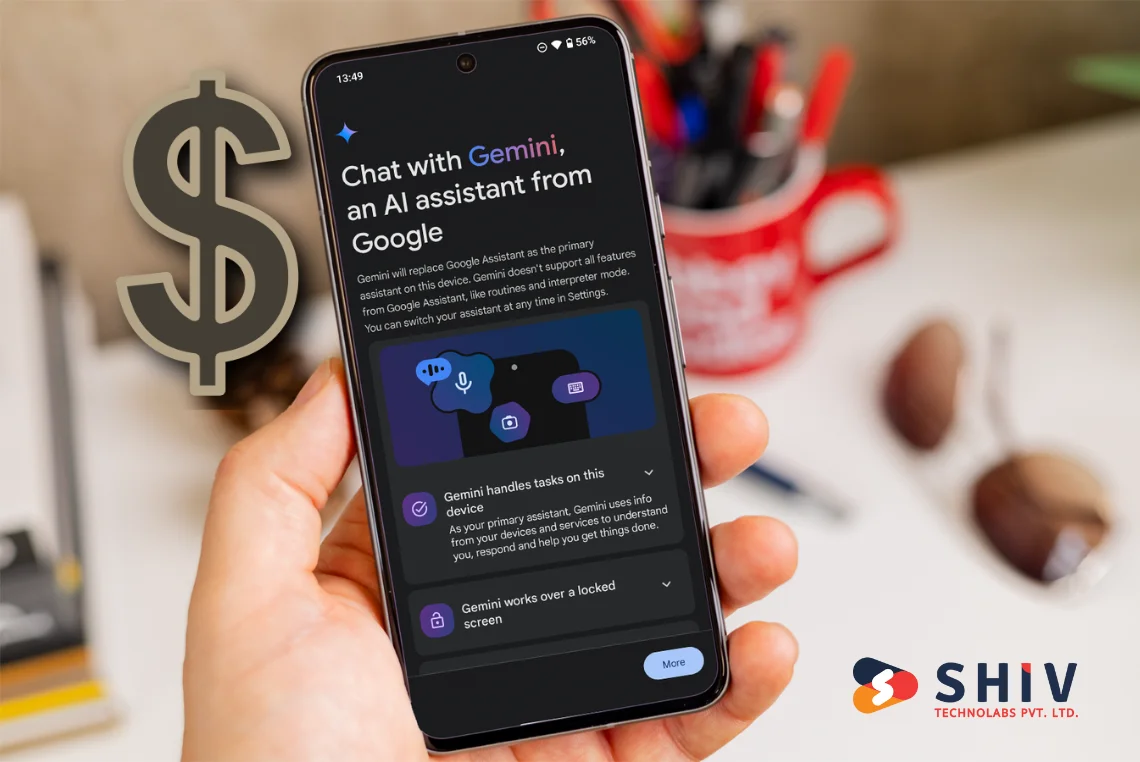Table of Contents
Artificial Intelligence (AI) and Machine Learning (ML) are changing industries and shaping the future of technology, so understanding their fundamentals is vital for anyone hoping to take full advantage of them. AI and ML involve key concepts and components that are crucial for their effective application. These technologies have real-world applications across various sectors, posing challenges but also offering significant opportunities. By gaining a solid grounding in AI and ML, and leveraging AI/ML development services, you can better understand and utilize these powerful tools for future use and innovation.
Artificial Intelligence
Artificial intelligence refers to the simulation of human intelligence processes by machines, particularly computer systems. These include learning (acquiring information and rules for applying it), reasoning (using rules to reach approximate or definite conclusions), self-correction and self-correction. AI seeks to create systems capable of performing tasks typically undertaken by humans such as visual perception, speech recognition, decision making and translation of language into multiple formats – this goal encompasses machine learning neural networks and natural language processing among others.
# Definition and Scope
Artificial Intelligence, or AI, refers to creating systems capable of performing tasks that typically require human intelligence – tasks like reasoning, learning and self-correction. AI’s scope spans from narrow applications such as voice assistants all the way up to broad concepts like self-driving cars. Being aware of all its implications across various sectors helps one grasp its full potential and maximize its impact.
# Types of AI: Narrow, General, and Super AI
AI can be divided into three distinct types, narrow AI, general AI and super AI.
Narrow Artificial Intelligence, commonly referred to as weak AI, is designed for specific tasks like facial recognition or internet searches.
General AI or Strong AI possess capabilities similar to that of humans by understanding, learning and applying intelligence across an array of tasks, similar to human capabilities.
Super AI outstrips human intelligence in all respects, from creativity to problem-solving.
At present, most artificial intelligence applications employ narrow AI techniques while general and super AI are still theoretical concepts undergoing further investigation and research.
What Is Machine Learning?

Machine learning is an area of AI that allows systems to utilize data collected over time in order to make improvements without explicitly programming any changes. It involves algorithms using statistical techniques in order to recognize patterns in data and make decisions based on them.
Machine Learning entails three fundamental concepts – training data, models and algorithms; with training data used initially as input into training models which then use algorithms in order to analyze it further before making predictions or decisions from it.
# Definition and Core Concepts
Machine learning refers to the practice of creating algorithms that enable computers to learn from and make decisions based on data. As opposed to traditional programming, which uses specific instructions as its basis for making decisions, machine learning allows systems to continually adapt as more data comes in.
Key concepts in machine learning include training data, algorithms, models, all working together to produce systems capable of predicting outcomes or identifying patterns – understanding these core concepts is crucial in understanding its inner workings and applications.
# Machine Learning in Three Types: Supervised, Unsupervised and Reinforcement
There are three primary categories of machine learning: supervised learning, unsupervised learning and reinforcement learning.
Supervised learning involves training a model on labeled data where its correct output is known, typically used for tasks like classification and regression analysis.
Unsupervised learning utilizes unlabeled data, enabling models to identify patterns and relationships in it. It is commonly employed for clustering and association tasks.
Reinforcement learning entails training a model to make decisions by rewarding desirable behaviors and penalizing undesirable ones, often used in robotics and gaming applications.
Also read : Maximizing Sales with AI: The Future of eCommerce
Machine Learning Consists of Key Components
Machine learning involves several key components that work together to form intelligent systems. These elements include data, algorithms and models – each playing an essential part in its creation and operation of machine learning applications. Understanding these pieces helps designers implement successful solutions.
# Data Is At the Core of Machine Learning
Machine learning rests upon data. Good quality, relevant data is necessary for training accurate models; such data can come from databases, sensors, or the internet – however preprocessing the data to make sure it meets training criteria is key to its success. Machine learning models largely depend on both quantity and quality of training data available to them for accurate results.
# Algorithms at the Core of ML
Algorithms are at the core of machine learning. As mathematical constructs that describe how models learn from data, algorithms form the backbone of machine learning projects. There are various algorithms used for machine learning projects and each suits specific tasks and data sets differently; popular examples include linear regression, decision trees, support vector machines, and neural networks – choosing an algorithm is vital to its success!
# Machine Learning Applications
Models are the output of machine learning algorithms. They represent patterns and relationships discovered from training data. Once trained, models can be used to make predictions or decisions on unseen information – their performance being evaluated using metrics like accuracy, precision, recall and F1 score. Retraining models regularly is key in maintaining accuracy over time.
How AI and ML Work Together

AI and machine learning work closely together; machine learning being one subfield of AI. While the former deals with creating intelligent systems, machine learning specializes in the techniques and algorithms necessary for their adaptation and learning capabilities – thus providing AI with specific tasks to perform such as data analysis, decision making, or process automation.
When combined, they create powerful solutions capable of analyzing data sets quickly while automating processes without manual intervention.
# Relationship Between AI and ML
AI and machine learning form an intricate relationship, where machine learning forms an essential element of artificial intelligence (AI). AI refers to machines being capable of carrying out tasks intelligently while machine learning refers to specific subsets of AI that allow machines to learn from data – this in turn enables AI systems to perform increasingly complex tasks from recognizing images to understanding human speech.
# Examples of AI Applications Leveraging Machine Learning
Many artificial intelligence (AI) applications use machine learning to achieve their goals. Chatbots utilizing natural language processing and machine learning for user queries; autonomous vehicles using machine learning algorithms for sensor data processing and driving decisions; healthcare AI systems employing machine learning algorithms for analysis medical images to assist diagnosis; etc are examples that showcase how these two disciplines come together to form intelligent adaptive systems.
Also read : How Much Does It Cost For AI App Development in USA
Common Algorithms in Machine Learning
Machine learning uses various algorithms to process data and predict future events. These mathematical models identify patterns within data that help us create predictions, so understanding which are commonly used algorithms is essential when choosing one for your application. In this section we explore some of the more widely utilized machine learning algorithms.
# Linear Regression
Linear regression is an elegant solution for predicting continuous outcomes from one or more input variables. It models this relationship by fitting a linear equation to the data, making linear regression popular across fields such as finance, economics and biology for tasks like stock price predictions or trend analysis.
# Decision Trees
Decision trees are an efficient algorithm used for both classification and regression tasks, operating by recursively splitting data based on input variables into subsets in a tree-like structure. Each node represents an attribute decision while branches represent its result; their ease of understanding makes them popular across many applications.
# Neural Networks
Neural networks are an algorithm family derived from the human brain’s structure and function, consisting of interconnected nodes called neurons arranged in layers. Neural networks can learn complex patterns in data quickly, providing the foundation for deep learning technologies like image recognition, natural language processing and AI software development.
# Clustering Algorithms
Clustering algorithms are used to group similar data points together based on their features, such as K-means, Hierarchical Clustering or DBSCAN. Common clustering algorithms include K-means, Hierarchical Clustering or DBSCAN which are widely utilized across different applications including customer segmentation, anomaly detection and image compression. Clustering also helps detect patterns within data, making it an invaluable asset in machine learning solutions.
Real-World Applications of AI and ML
Artificial intelligence and machine learning technologies have various real-world applications across industries. From healthcare to finance to retail to transportation, these technologies are driving innovation and improving efficiency – this section highlights some key applications of AI/ML across various sectors.
# Healthcare
AI and machine learning are revolutionizing healthcare, offering more accurate diagnoses, customized treatments, and efficient operations. AI systems can analyze medical images to predict patient outcomes and identify potential health risks; while machine learning algorithms develop predictive models of diseases to optimize treatment plans and enhance care. Artificial intelligence companies in USA are leading this movement toward creating innovative solutions.
# Finance
AI and ML technologies are increasingly being deployed within the financial industry to detect fraudulent transactions, assess credit risk and automate trading. Machine learning models analyze vast amounts of financial data in search of patterns and trends for improved decision-making; AI chatbots offer customer support while robo-advisors offer personalized investment advice; machine learning development companies in USA assist financial institutions harness this power of AI.
# Retail
Retailers leverage AI and ML technologies to optimize customer experiences, inventory management processes and marketing strategies while personalizing marketing approaches. Machine learning algorithms analyze customer behavior to recommend products, predict demand and prevent stockouts; chatbots also help provide personalized recommendations to customers requiring assistance with inquiries or offering personalized recommendations. AI software development in retail is revolutionizing how businesses engage customers while managing operations.
# Autonomous Vehicles
Autonomous vehicles rely on AI and machine learning algorithms to navigate and make driving decisions. Machine learning algorithms use data collected by sensors, cameras, GPS units and AI systems such as control software to recognize obstacles like traffic signs or detect potential accidents along the route while AI systems use this information to ensure safe driving practices are in place. Companies developing autonomous vehicles leverage machine learning solutions in their efforts to build safer transportation networks that are also more cost-efficient.
Challenges and Limitations
AI and ML both bring many benefits, yet also present several unique challenges and limitations. These may include data quality concerns, ethical considerations and computational power limitations – understanding these obstacles is integral for implementing successful AI/ML solutions successfully; in this section we highlight some key challenges and restrictions related to these technologies.
# Data Quality and Quantity
Both aspects of data are vitally important in the success of artificial intelligence and machine learning projects. Accurate representations of real world scenarios are required for training accurate models; however, gathering this type of high-quality data may prove challenging. More data often leads to improved model performance; protecting privacy and security are two challenges artificial intelligence companies in USA face daily.
# Ethical Considerations
AI and machine learning raise numerous ethical concerns, including bias, transparency and accountability. Machine learning models may inherit biases present in training data that lead to unfair or discriminatory results; transparency in AI systems is vital in building user trust as it provides users with insight into how decisions are being made; additionally, accounting for any impacts AI decisions have on sensitive areas such as healthcare or finance is also of great concern.
# Computational Power
AI and ML algorithms require significant computational power in order to process large datasets and train complex models, and may necessitate high-performance hardware such as GPUs and TPUs to achieve acceptable training times and model performance. Unfortunately, cost and availability may often limit organizations, which is why companies specializing in AI development are constantly working to optimize algorithms and enhance computational efficiency.
Future of AI and Machine Learning
The future of AI and ML looks bright, with several emerging trends shaping its industry. These include advances in AI technologies, increased adoption across sectors and ongoing research and development efforts. Recognizing these future trends is critical to staying at the forefront of the rapidly advancing field of AI/ML; in this section, we explore some of the key trends and potential impacts related to these fields of research.
# Emerging Trends
AI and ML hold great promise, with various trends shaping its industry. One such trend is the increasing use of AI in edge computing devices to enable real-time processing and decision making; another emerging trend is explainable AI that strives to make AI systems more transparent and understandable; advancements in AI/ML technologies have led to innovations in natural language processing, computer vision technology, robotics, etc.
# Potential Impact on Various Industries
AI and Machine Learning Can Transform Multiple Industries. Artificial intelligence and machine learning hold great promise to impact a range of industries, from healthcare and finance to manufacturing and retail. Healthcare AI systems can improve diagnostics, personalize treatments, optimize operations, provide personalized financial advice or improve efficiency and precision in manufacturing through robot-powered AI-enhanced robots.
While the impact will continue to expand with technology advances. The impact of AI/ML will continue to expand upon various sectors as new innovations emerge – continuing to impact more industries as technology advances further.
Conclusion
Understanding AI and machine learning fundamentals is vital for realizing their full potential across multiple industries, from healthcare and finance to retail and autonomous vehicles. Companies specializing in AI/ML development in the USA are at the forefront of this technological revolution. By staying informed of trends and advances, businesses can utilize these powerful technologies to remain competitive. Partnering with an AI/ML development company in USA can provide the expertise and resources needed to successfully implement these innovations..
Shiv Technolabs is a premier AI and machine learning development company in USA, specializing in tailoring cutting-edge solutions specifically tailored to meet your business requirements. Our dedicated team of developers and data scientists is focused on helping you use AI/ML technologies to drive innovation and meet business goals more easily. From software development to machine learning solutions, our comprehensive services will transform your ideas into reality – partner with Shiv Technolabs today to stay ahead in this constantly shifting technological sphere!




















